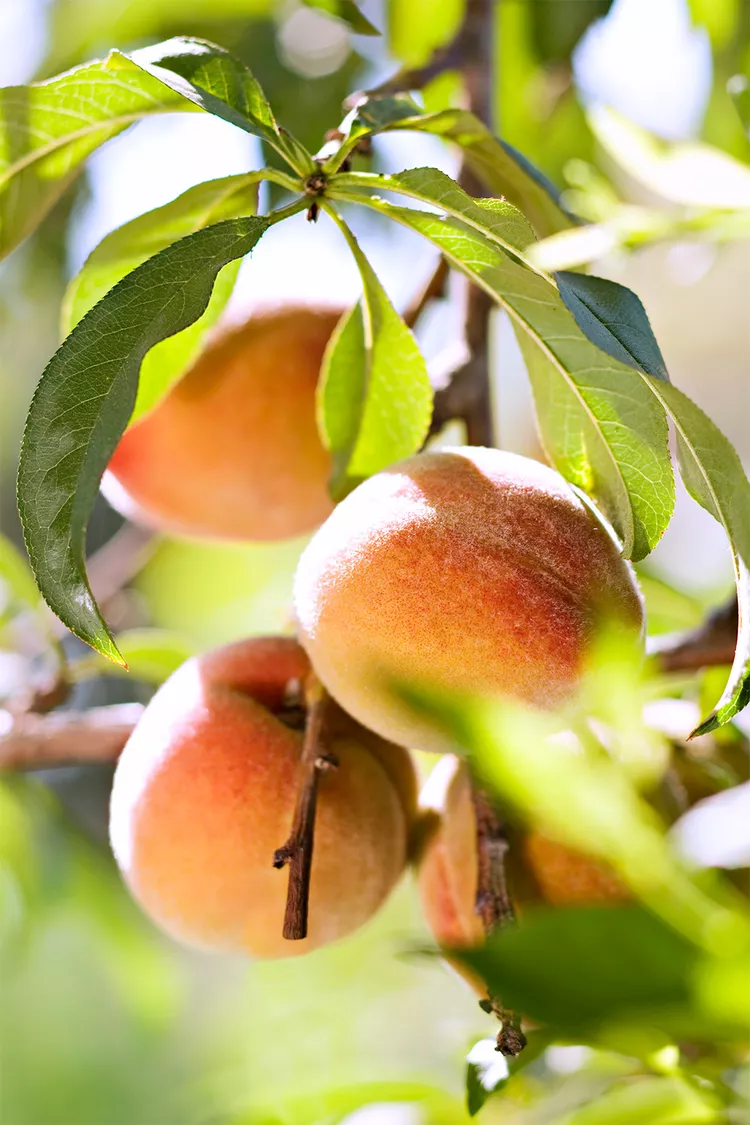Take the Guesswork Out of Pruning Fruit Trees with These 9 Tips

Fruit tree pruning is probably one of the most neglected garden chores. The reason for that is simple—it’s often avoided because you might not even know where to start. Or maybe you didn't even know that pruning fruit trees is an important part of producing a good harvest. These 9 straightforward tips will help take the mystery out of the process and help you care for your fruit trees better. If you're not sure about when to prune or where to make your cuts, you'll find all of that and more below. You'll be wielding your pruning tools with much more confidence in no time.
1. Prune in Late Winter
The best time to prune is late winter or early spring before the tree begins to produce new leaves and after the coldest winter weather passes. Bare branches in late winter make it easy to see a tree’s structure. Before starting a pruning job, stand back and analyze the tree’s branching. Strong trees are generally symmetrical and have wide branch angles. A wide branch angle is formed when a branch grows from the trunk at a 45 to 60 degree angle. Prune away branches with narrow branch-to-trunk angles. Examine the leafless tree for dense interior growth. Look for branches that can be removed to let more light into the interior of the tree.
Test Garden Tip: Disinfect your pruning tools with a 10% bleach solution before you begin. It's also a good idea to clean them off between trees to avoid spreading any diseases.
2. Let Light In
Pruning fruit trees is primarily focused on making pathways for sunlight to reach into all parts of the tree. Have you noticed that the best fruit—on apple, cherry, and peach trees for example—is usually found at the top of the tree? That’s because the top of the tree receives the most light. Selectively pruning out closely spaced interior branches will make way for light to reach more branches, encouraging fruit development throughout the canopy—not just at the hard-to-harvest tip top.
3. Tame Growth in Young Trees
Fruit trees less than 10 years old tend to produce many vigorous upright shoots called water sprouts. These non-fruiting sprouts don’t contribute to the overall structure or health of the tree and are best removed before they gain size. Cut water sprouts back to the main branch. If a young tree has few lateral or side branches, it can be encouraged to produce new branches by cutting the existing branches back by one-quarter their length. These branch tip cuts will cause the tree to create side branches a few inches from where the cut was made.
4. Encourage New Growth in Old Trees
Pruning old fruit trees often brings many back into fruit production. The goal is to jolt the tree back into fruiting by removing years of old growth. Old, overgrown apple and pear trees take to rejuvenation pruning well. Cherry trees can be rejuvenated too. Overgrown peach and nectarine trees usually don’t do well with major pruning so take a lighter hand with them.
Begin rejuvenating an old fruit tree by removing all dead and crossing branches. Next, reduce the size of the tree if desired. Do this by cutting excessively long branches back to their origin. Continue pruning the tree yearly, removing no more than one-third of the branches each year, until the tree is the desired size.
5. Get Rid of Problem Areas
The easiest pruning cuts to make are those that remove dead wood or crossing branches. These offending branches are usually easy to spot. Check to see if a branch is dead or alive by scraping back the uppermost layer of bark. If the branch is alive, it will look green just under the layer of bark. Crossing branches are any branches that are rubbing on nearby stems or growing into the growth zone of a dominate branch.
6. Remove the Entire Branch
Cut an offending branch all the way back to its point of origin. Don't leave a branch stub behind. By pruning to a main branch or trunk, you prevent the tree from producing vigorous, unproductive sprouts that will add to pruning chores down the road.
7. Thin Things Out
Gardeners tend to prune too little and too timidly rather than too much. Opt to make one or two big cuts rather than a dozen little cuts that will yield no significant results. Keep the end goal in mind—opening the tree to light and creating healthy structure—as you boldly make cuts.
8. Clean Up Debris
Rake up and dispose of all pruning debris. When left in place under a fruit tree, this debris can become a source of disease.
9. Prune Annually
Pruning is not a one-time event. When pruning is an annual late winter activity, the tree will respond with healthy growth and more fruit than an unpruned tree. Think of it this way: an investment of 30 minutes spent pruning a fruit tree each year will yield a long life for your tree and a bountiful harvest for years to come.